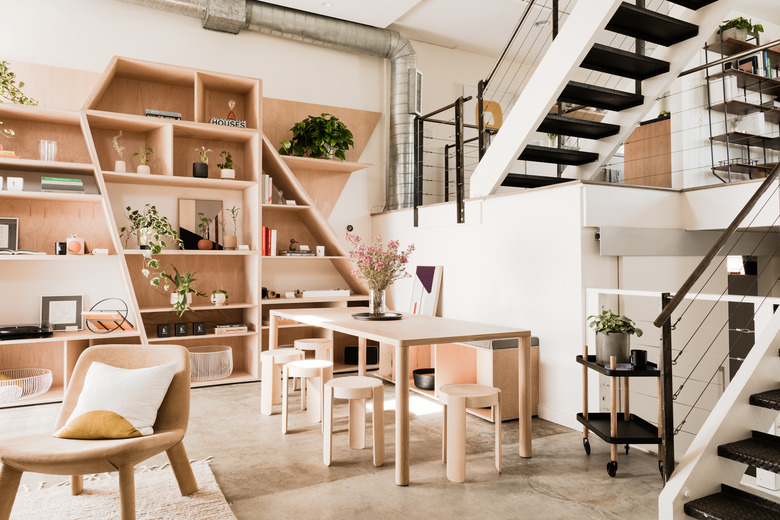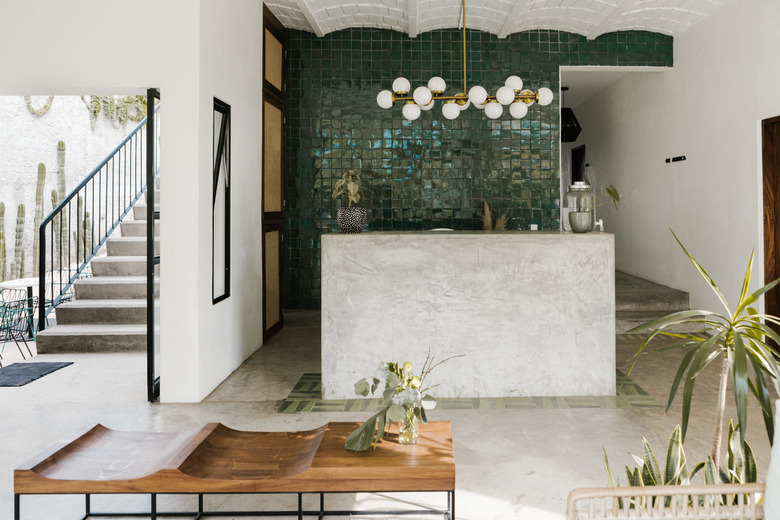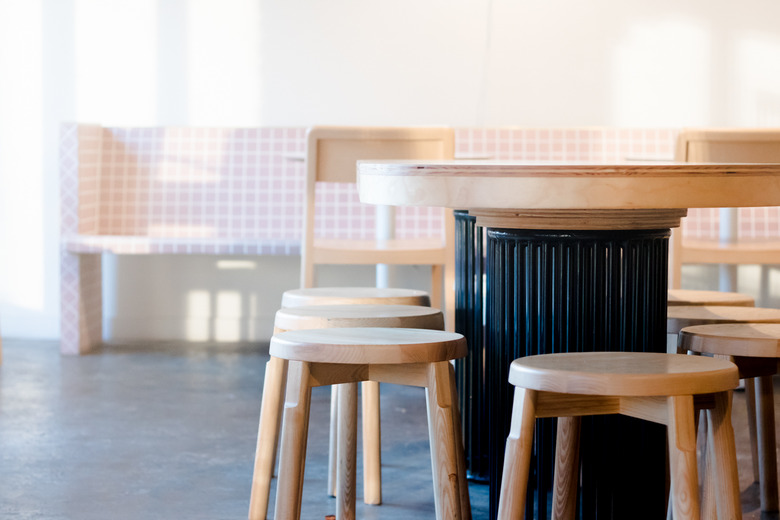Polished Concrete Floors: What You Should Know
Polished concrete floors are similar to a basic concrete slab that you might find in a basement or garage, but they have a different finish. According to the Portland Cement Association, regular concrete is made up of a mixture of cement, water and aggregates. It is a basic, sturdy material that has many different applications.
Polished concrete starts with this as the base material and then includes an application of a concrete densifier that fills in holes where air pockets exist to further harden and help seal the material. This allows the surface to be sanded to a nice sheen, providing a finished look. Polished concrete is low maintenance, long lasting and can be used in a variety of different spaces throughout the home. Although this material may appear especially slippery, it is quite safe for use in a residence as long as it is properly maintained.
About Polished Concrete
About Polished Concrete
Polished concrete floors have many advantages, including the fact that they don't trap allergens or sustain water damage. While the appearance of this flooring may not appeal to those with more traditional tastes, many homeowners are drawn to the contemporary look it offers. Although not every concrete floor will be a good candidate for polishing, most respond to it quite well. A concrete contractor can help you evaluate your current flooring to see if this technique would work well in your home.
The process of polishing concrete is fairly straightforward, and it begins with floor preparation. Any coating or grime that is already on the floor must be removed, and existing cracks should be filled. Next, the surface will need to be mechanically ground down, hardened with a chemical densifier and polished. Sometimes, an additional seal layer will also be added. All of these steps require tools that are specific to polishing concrete, and they center around diamond-segmented abrasives in varying grits.
Durability and Appearance of Polished Concrete Floors
Durability and Appearance of Polished Concrete Floors
Extremely tough and long-lasting, polished concrete floors are an incredibly durable choice. They stand up to heavy wear and tear, can handle water and tend to hold up better than most other flooring types. The longevity and overall toughness of this flooring has made it a popular pick for businesses, but now homeowners are realizing the benefits of polished concrete and opting for this technique in residential applications as well.
Polished concrete makes for a beautiful floor. With its smooth, glossy appearance, this type of decorative concrete is both sleek and stylish looking. Homeowners are embracing this material for everything from finished basements to kitchens and living rooms. Some newer homes are even being built with polished concrete running throughout the entire first floor. It can stand on its own as a flooring choice or be combined with area rugs to help define spaces and create more warmth.
Polished concrete pairs well with many different design aesthetics, and its gloss is very light-reflective, adding to its appeal. The polishing process can also be combined with stained concrete in a wide range of colors, and the gloss and sheen can be dialed in as well. Everything from a more matte or satin look to a high gloss is achievable through the sanding that takes place in the polishing process.
Safety of Polished Concrete Floors
Safety of Polished Concrete Floors
The glossy appearance of polished concrete often initially raises safety concerns among homeowners who are considering the material, especially if it is to be used in an area that will probably see some moisture, such as a kitchen or bathroom. The Concrete Polishing Council cites research that shows that polished concrete is within acceptable safety standards for flooring in spaces that may get wet.
Testing performed by the American National Standards Institute found that even at high levels of gloss, polished concrete is acceptable for use in these kinds of applications. This doesn't mean that polished concrete can't get slippery when wet, but it does mean that it is no more dangerous than other similar materials, such as certain types of tile flooring. Basically, this puts it on equal footing with other floor materials.
If additional slip resistance is desired, one smart option is adding throw rugs, runners and area rugs with a slip-resistant backing such as rubber to the spaces that get the most foot traffic. This still allows the beauty of the polished concrete to shine through while providing additional traction for those walking through the home. Stylistically, it also adds more decorating options.
Another way to add more traction is to request that the concrete contractor apply an anti-slip additive to the process to increase the coefficient of friction, which simply means slip resistance. These products are designed to provide some texture and more grip to the concrete without dulling the polished finish. There are also some products on the market that you can apply to the floor after it is done to increase slip resistance.
Maintaining a Polished Concrete Floor
Maintaining a Polished Concrete Floor
While not entirely maintenance free, polished concrete floors do not require extensive upkeep. That said, they will look their best if a little daily maintenance is performed. A simple dust mopping removes dirt and debris that can cause the surface to deteriorate over time. You'll want to wet mop periodically as well to lift out any stubborn particles. Be sure to use a soft mop or pad and a cleaner that is designed for polished concrete floors. That's really all the maintenance you'll have to do to keep things looking good.
Maintenance is also something that is related to the safety of a polished concrete floor. Keeping this kind of floor clean is one of the very best things you can do to keep it from becoming slippery. Dust, dirt and grime buildup can create very undesirable conditions, and since it doesn't require much time to run a dust mop over the surface, it's time that is well spent. Naturally, it is always wise to mop up excess water on flooring of any kind so as not to create a hazard unnecessarily.
Is Polished Concrete DIY-Friendly?
Is Polished Concrete DIY-Friendly?
Polishing concrete requires specialized equipment, and the work itself can be somewhat complex, especially if multiple additives for color and slip resistance are included in the scope of work. Both older concrete slabs and brand-new pours can be polished, but there are factors to consider for both situations that can have an impact on the success of the job. The integrity of the concrete and the curing process are examples of things that may need to be considered prior to moving forward with this type of project.
Between evaluating a floor to see if it makes a good candidate for polishing to getting just the right sheen, this is probably a job best left to a professional. That said, since the cost of this kind of floor is relatively low compared to many others, having a concrete contractor do the work can still be cost effective overall.
References
- Concrete Polishing Council: Slip Resistance of Polished Concrete
- Portland Cement Association: How Concrete is Made
- ForConstructionPros.com: Densifiers Demystified
- American National Standards Institute: Home
- Concrete Decor: Research Says Polished Concrete is the Most Slip-Resistant Flooring
- ConcreteNetwork.com: Anti-Slip Additives and Products


